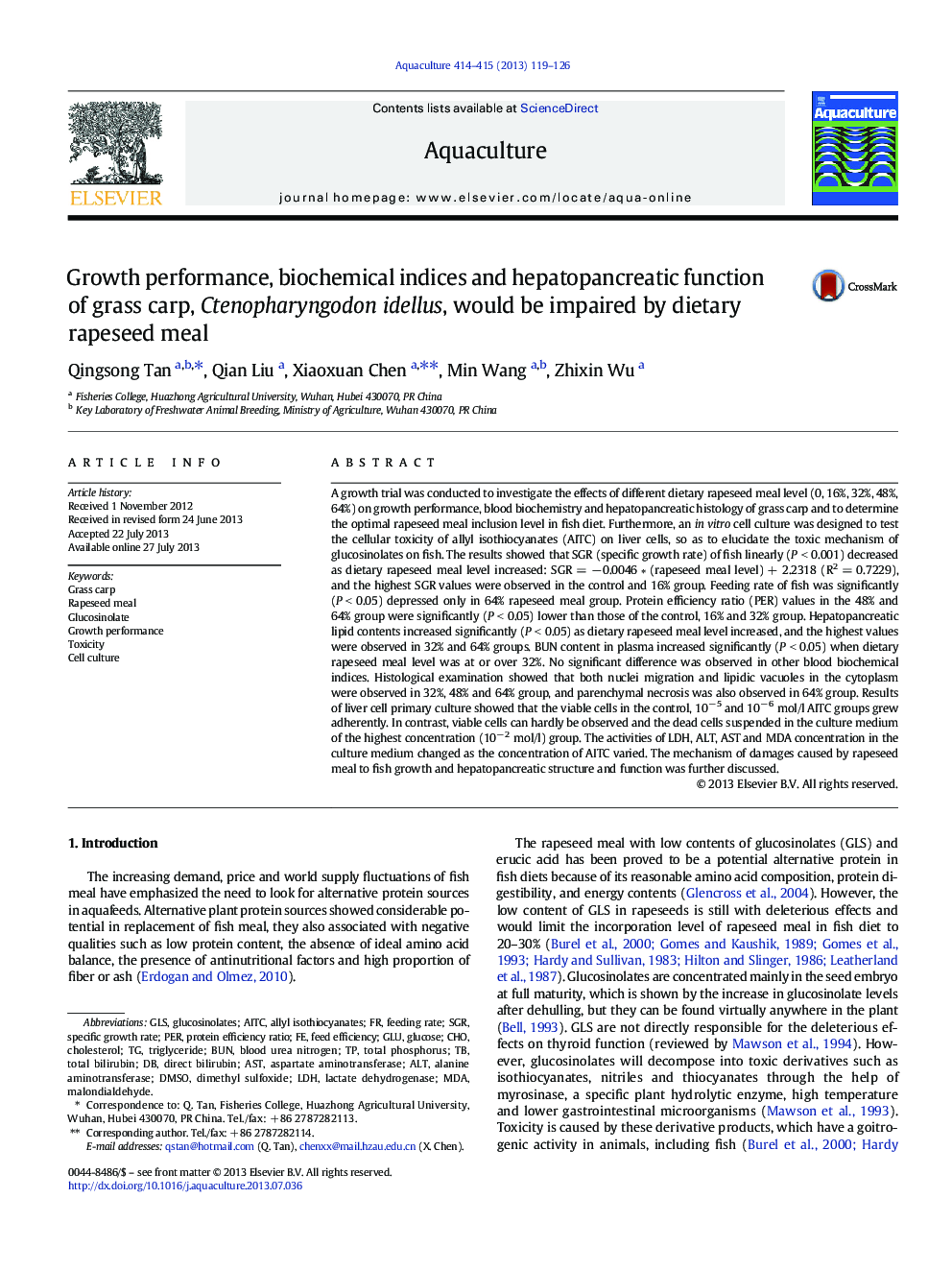| Article ID | Journal | Published Year | Pages | File Type |
|---|---|---|---|---|
| 8495376 | Aquaculture | 2013 | 8 Pages |
Abstract
A growth trial was conducted to investigate the effects of different dietary rapeseed meal level (0, 16%, 32%, 48%, 64%) on growth performance, blood biochemistry and hepatopancreatic histology of grass carp and to determine the optimal rapeseed meal inclusion level in fish diet. Furthermore, an in vitro cell culture was designed to test the cellular toxicity of allyl isothiocyanates (AITC) on liver cells, so as to elucidate the toxic mechanism of glucosinolates on fish. The results showed that SGR (specific growth rate) of fish linearly (P < 0.001) decreased as dietary rapeseed meal level increased: SGR = â 0.0046 â (rapeseed meal level) + 2.2318 (R2 = 0.7229), and the highest SGR values were observed in the control and 16% group. Feeding rate of fish was significantly (P < 0.05) depressed only in 64% rapeseed meal group. Protein efficiency ratio (PER) values in the 48% and 64% group were significantly (P < 0.05) lower than those of the control, 16% and 32% group. Hepatopancreatic lipid contents increased significantly (P < 0.05) as dietary rapeseed meal level increased, and the highest values were observed in 32% and 64% groups. BUN content in plasma increased significantly (P < 0.05) when dietary rapeseed meal level was at or over 32%. No significant difference was observed in other blood biochemical indices. Histological examination showed that both nuclei migration and lipidic vacuoles in the cytoplasm were observed in 32%, 48% and 64% group, and parenchymal necrosis was also observed in 64% group. Results of liver cell primary culture showed that the viable cells in the control, 10â 5 and 10â 6 mol/l AITC groups grew adherently. In contrast, viable cells can hardly be observed and the dead cells suspended in the culture medium of the highest concentration (10â 2 mol/l) group. The activities of LDH, ALT, AST and MDA concentration in the culture medium changed as the concentration of AITC varied. The mechanism of damages caused by rapeseed meal to fish growth and hepatopancreatic structure and function was further discussed.
Keywords
MDAALTAITCSGRGLSDMSOASTAspartate aminotransferaseAlanine aminotransferaseChoDirect bilirubintriglycerideBUNperDimethyl sulfoxideFeed efficiencyProtein efficiency ratioToxicityGrowth performancelactate dehydrogenaseLDHmalondialdehydeFeeding ratespecific growth rateblood urea nitrogenRapeseed mealCell culturetotal bilirubinTotal phosphoruscholesterolGrass carpGluGlucoseGlucosinolateGlucosinolates
Related Topics
Life Sciences
Agricultural and Biological Sciences
Aquatic Science
Authors
Qingsong Tan, Qian Liu, Xiaoxuan Chen, Min Wang, Zhixin Wu,
